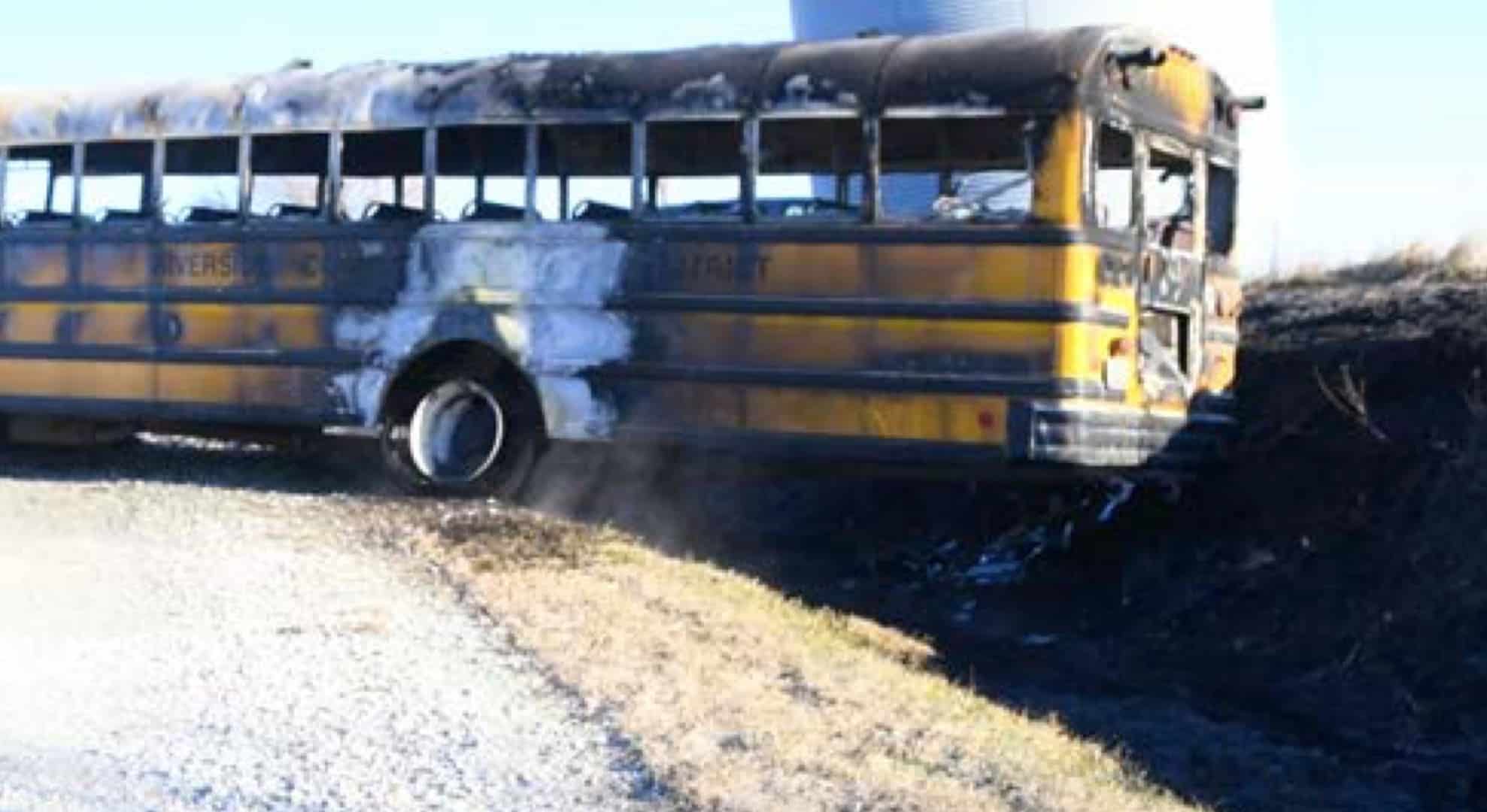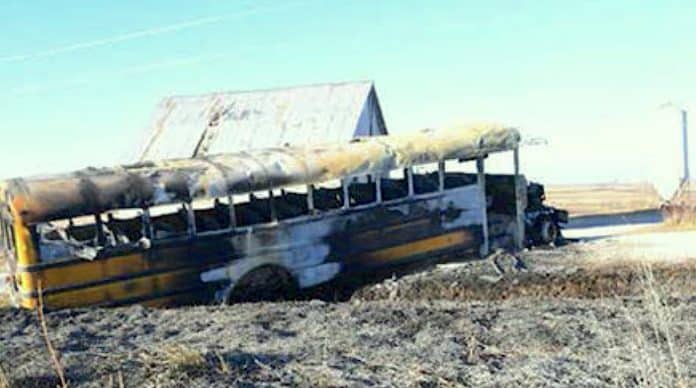The U.S. National Transportation Safety Board (NTSB) will hold an open public board meeting on June 18 to announce the probable cause of the fatal school bus fire on Dec. 12, 2017, in Oakland, Iowa. Meanwhile, new details emerged about the elderly bus driver’s physical condition that indicate he had no business being behind the wheel.
- Related: California District Receives Donated School Bus Surveillance Systems After Fire
- Related: Fast-Acting Colorado Driver Puts out School Bus Fire
- Related: In the Business of Preventing School Bus Fires
- Related: Investigation Started Into N.C. School Buses Catching Fire
- Related: Kansas City School Bus Catches Fire, 3 Students Escape Uninjured
- Related: Mass. School Bus Catches Fire on Highway
- Related: New York School District Suffers Latest Bus Yard Fire
- Related: N.J. Driver Acts Fast in School Bus Fire
- Related: NTSB Calls for Fire Suppression Systems in All School Buses
- Related: On Fire for School Bus Safety
- Related: Red Cross Helps After School Bus Catches Fire
- Related: School Bus Catches Fire on Calif. Highway
- Related: School Bus Fire, Evacuation Exercise Held at NAPT, NASDPTS Conference
- Related: School Bus Fires
- Related: School Bus Fire in Florida, Hero Driver Safely Evacuates Kids
- Related: Students Escape as Alabama School Bus Gutted by Fire
- Related: Wiring to Blame in North Carolina School Bus Fires
The 74-year-old bus driver, Donnie Hendricks, and the only passenger, 16-year-old student Megan Klindt, died when the bus engine caught fire. It spread quickly, and Hendricks and Klindt were unable to escape the burning bus. Klindt’s mother and sister were on scene and attempted to break bus windows, but were pushed back by the intense heat.
In a medical report dated Aug. 27, 2018, NTSB confirmed multiple reports that Donnie Hendricks, 74, was essentially immobile without the use of a cane or walker. The forensic autopsy toxicology results confirmed that there were no drugs of abuse or alcohol in Hendricks’ system, though it revealed pharmaceutical drugs prescribed for a painful medical condition. In fact, Hendricks had a scheduled surgical procedure for his back scheduled for just two days after the crash and fire.
The NTSB medical report documented “incidental coronary artery disease and the presence of stabilization hardware in the inferior lumbar vertebral column.”
The autopsy report indicated Hendricks died of smoke and soot inhalation, plus burns, but there was no cause of death reported for his student passenger, Megan Klindt, 16.
- Related: Preliminary Report is Inconclusive on Iowa School Bus Fire
- Related: Parents of Girl Killed in Iowa School Bus Fire Sue District
- Related: NTSB On Scene at Site of Fatal Iowa School Bus Crash
- Related: Authorities Question Maintenance Records in Iowa School Bus Fire
More Medical Details Emerge
The eight-page medical report from the NTSB, dated August 2018 and signed by medical officer Dr. Nicholas Webster, has apparently just now become public. It discusses whether or not Hendricks was able to meet the physical qualification standards, as required by Title 49 of the Code of Federal Regulations, Section 391.41a (3).
The investigation was performed to “evaluate the driver involved in this accident for any medical conditions, the use of any medications/illicit drugs, and the presence of any toxins.” NTSB said its investigators reviewed Hendricks’ personal medical records, Federal Motor Carrier Safety Administration (FMCSA) commercial driver’s license (CDL) examinations, autopsy and toxicology reports.
Five annual FMCSA CDL medical examinations from 2009 to 2017 were analyzed. The latest exam, dated March 6, 2017, recorded that Hendricks was “only taking medications for elevated cholesterol and a history of cataracts, but denied any neck or back problems (despite having had spinal surgery two months earlier). The examining certified medical examiner, a chiropractor, documented a normal physical examination including the normal back, spine, and neurological exams, recorded the driver met the requirements established by 49 CFR 391.41 and qualified him for 2 years.”
The driver’s active medical conditions and medications, as documented by his primary care provider, were included in the medical report, and are listed below.
Medical Condition Treatment
- Chronic pain / degenerative disc disease Acetaminophen (pain reliever)
- Chronic pain / degenerative disc disease Gabapentin (chronic pain medicine)
- Depression Bupropion (antidepressant)
- Diabetes Diet
- High blood pressure Diet
- High cholesterol Simvastatin (cholesterol-lowering medication)
- Gastric reflux Pantoprazole (acid-reducing medication)
A key section of the study revealed that Hendricks had received “successful lower back spinal fusion (L3-L5) in January 2017, but had developed recurrent debilitating pain radiating down both legs and was scheduled for surgery to fuse additional lower back vertebra (L2-L3). The physical examination documented the driver had symmetric strength in the lower extremities but required a walker to get around. The examining health care provider made no comment about the driver’s ability to operate a school bus.”
Investigators wrote that “spine specialist records from April 2014 to November 14, 2017 (one month prior to the fire) documented a history of progressive lumbar disc degeneration, spinal stenosis, progressive back pain with radiation down the legs, and stable right lower leg weakness. One month prior to the accident, Hendricks reported that he could walk if he used canes or crutches, and pain prevented sitting for more than 30 minutes or standing for more than 10 minutes (at a time). Even with medication, he was sleeping less than four hours at a time.”
Back Surgery was Planned
Those observations led to the next discussion about his mobility. Hendricks said he used a four-wheeled walker, “walked with about a 15-degree forward stoop, and had pain when transferring from sitting to standing. Imaging studies showed degenerative changes in the area of the L2-3 disk, along with the progressive deformity and stenosis with progression over the preceding 10 months. The neurosurgeon recommended surgical intervention, since physical therapy had been ineffective and the driver was reaching the point where he was having difficulty performing activities of daily living.”
Summary of Findings
Hendricks had a “history of high blood pressure, high cholesterol, depression, diabetes, and gastric reflux controlled with diet and medication. Additionally, he had recurrent, progressive low back pain with neurologic symptoms previously treated with spinal fusion surgery. He was found qualified for a commercial driver’s license … [but] since the exam he had developed worsening of his degenerative disc disease, resulting in stable mild right dorsiflexion weakness and debilitating pain that resulted in the driver’s inability to walk without the use of a cane or walker. He was scheduled for additional back surgery two days after the accident.”

















